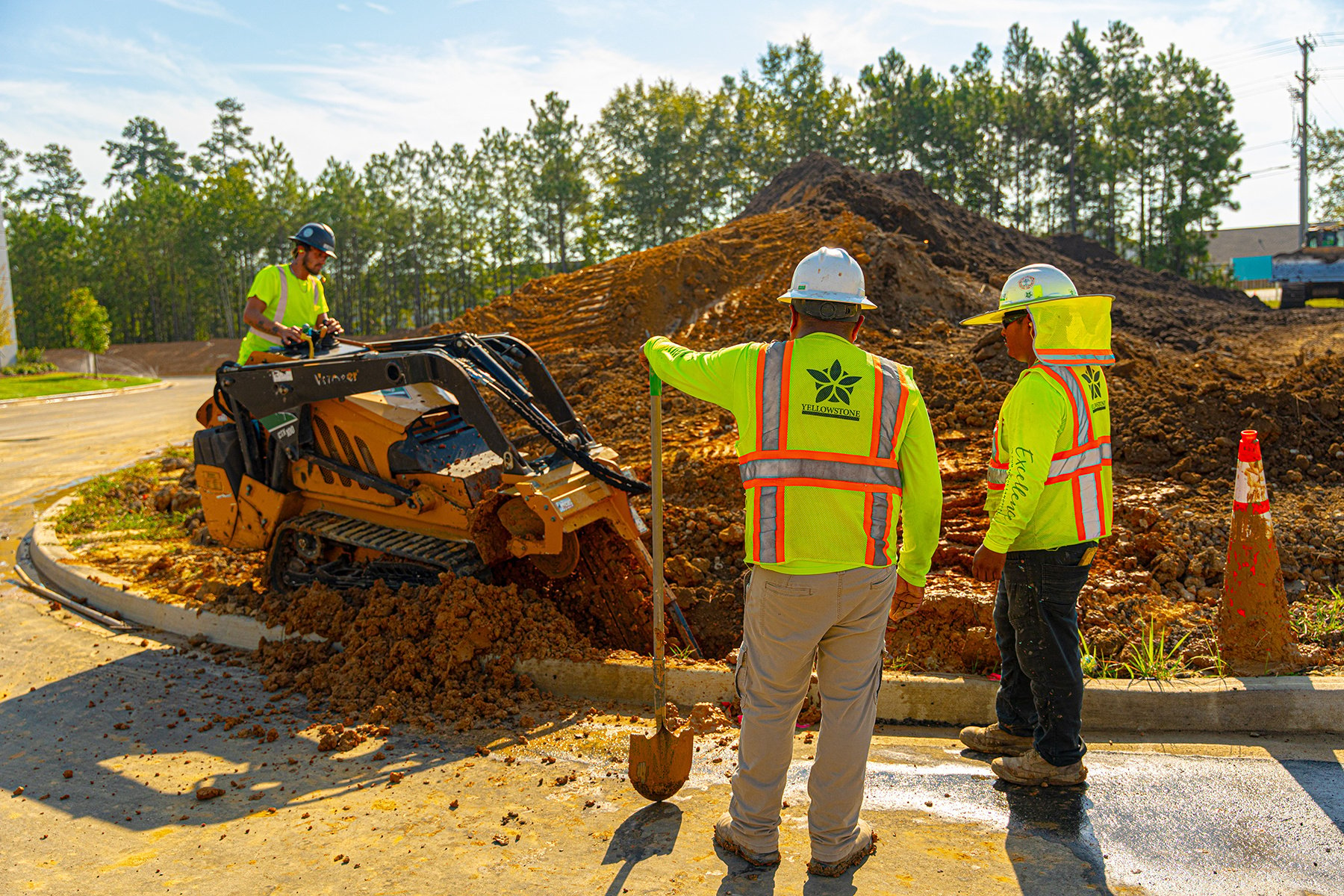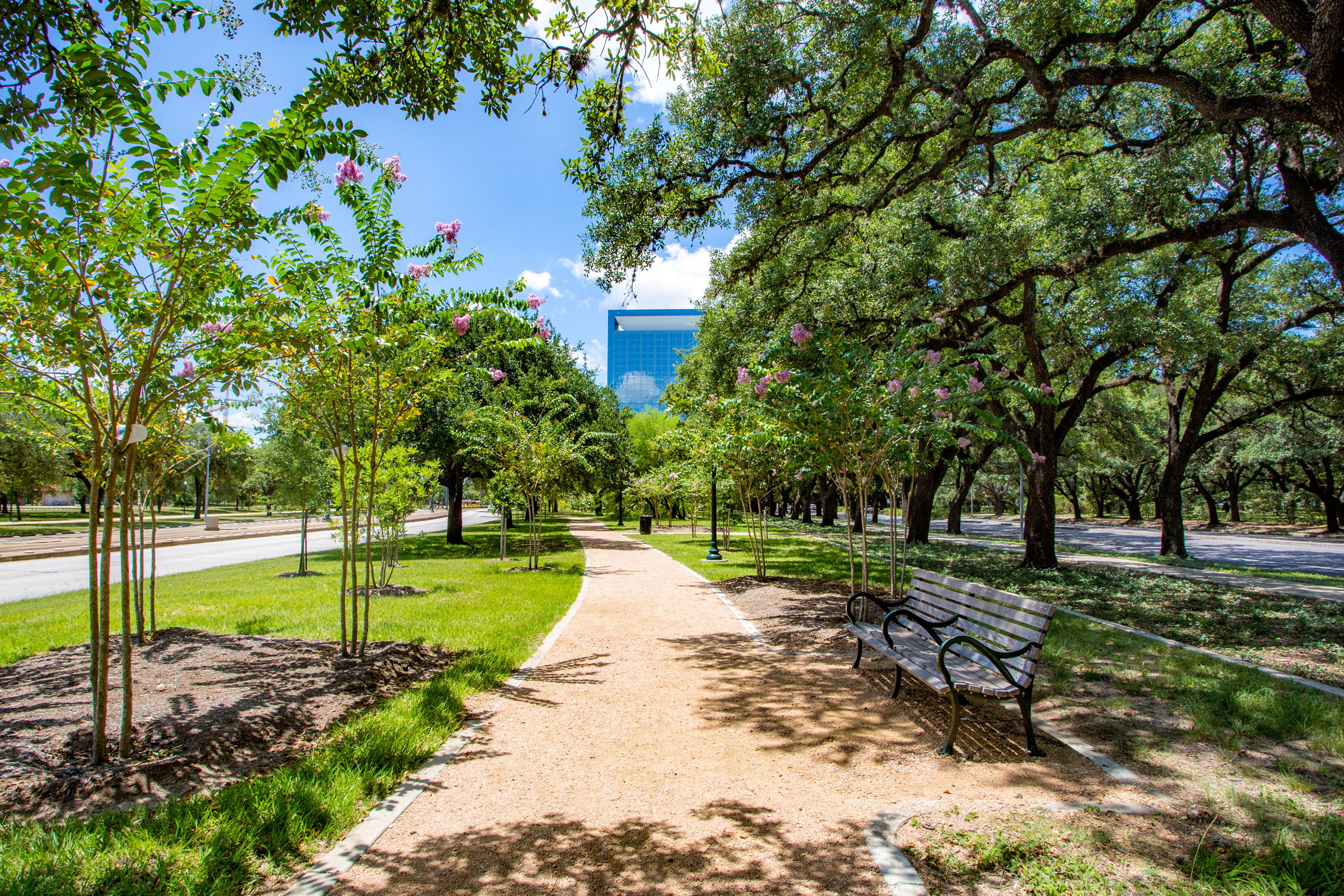Flowers depict the arrival of spring. They’re bright, colorful, and provide a cheerful scent that fills the air. All quite welcoming after the gray gloom of winter. Spring flowers and flowering shrubs are perfect for adding inviting color to your commercial property. Vivid flowers, with their refreshing scent, help visitors, residents, employees, and shoppers feel relaxed and welcome at your property.
Hiring a knowledgeable commercial landscaping service helps you select the ideal shrubs and flowers appropriate for your property.
Vibrant hues of exotic flowers and shrubs add another dimension to your commercial property, while enhancing the overall value of the spaces you own and manage. Investing in high-quality landscaping with carefully chosen flowers to improve the look and feel of your property sets your business up for success.
It’s like a gift that keeps on giving. The right installation choices provide more than rich hues of spring-flowering shrubs that attract the attention of customers and tenants to your property. Proper shrub selection also adds beneficial biodiversity to your landscape. Further, it provides greater maintenance efficiency—a nice way to maximize your budget (details on how below).

Why Spring Flowering Shrubs Are Ideal For Your Business' Landscape
First impressions don’t get a second chance. That’s why spring-flowering shrubs for commercial landscapes make such a positive impact. Everyone on your property or folks simply passing by can immediately see vibrant beauty, especially the contrast right after the somber days of winter end.
Another thing about choosing lively colors for a commercial landscape is how it draws people outside. A buzz of activity is noticeable to passersby, making your outdoor spaces more desirable. Then, there’s the brand image benefits inherent to well-kept and carefully designed green spaces.
Your brand gets the added bonus of sustainability and lower maintenance requirements with the right spring-flowering shrubs. Using the “right plant, right place” concept, your blooming shrubs’ upkeep is lessened, as you see below:
- Native shrubs usually need less water
- Ideal shrubbery will require only occasional pruning
- The best shrubs for business landscapes provide visual intrigue long after bloom periods
One hidden upside comes with choosing pollinator-friendly spring-flowering shrubs. This extra consideration means property owners get the bonus of biodiversity, which can enhance their overall landscape’s health. Furthermore, pollinators are attracted to spring food sources, and the ideal blooming shrubs provide ample food.
With flowers attracting butterflies and honeybees, residents, shoppers, and guests get the added visual appeal of these helpful organisms. Not to mention how this can enhance your brand’s sustainability reputation.
Yellowstone Landscape’s Criteria for Selecting Shrubs
- Climate compatibility: How Yellowstone Landscape selects shrubs based on regional hardiness zones.
- Drought tolerance & sustainability: Prioritizing low-water and resilient plant species.
- Aesthetic planning: Balancing height, bloom time, and color variety.
- Maintenance considerations: Choosing shrubs that fit Yellowstone’s seasonal maintenance plans.
Climate compatibility affects the selection of the best shrubs for commercial landscapes. Here’s how Yellowstone Landscape chooses the perfect flowering shrubs for client properties:
- Regional hardiness zones must be considered
- Shrubs are matched to each property’s unique conditions
- Adaptive species are chosen for longevity and to blend with local ambiance
- Microclimates determine whether certain spring-flowering shrubs will thrive
- Space limitations impact plant grouping opportunities
Ideal shrubs should save clients money on water use as well. That’s why Yellowstone designers choose plants that thrive even in arid conditions. Texas sage and Red yucca are two drought-tolerant examples that are resilient and produce striking colors.
To enhance the bold colors, our designers look for ways to utilize a variety of shrub features. After all, there are species perfect for ground cover, medium-sized options, and tall shrubs meant to create borders or privacy. Staggered bloom times multiply the creativity as properties enjoy year-round blasts of color and variety. And nuanced hues found in flowering species like Gulf muhly and Autumn sage prevent monotony in the landscape.
Of course, shrubs need to fit Yellowstone Landscape’s service calendar and seasonal maintenance plans (details below):
- Low-maintenance shrubs save clients money on labor costs
- Pest-resistant choices minimize the need for additional spray applications
- Shrub maintenance tasks are efficient since they're grouped by water and nutrient needs and pruning schedules
Top Spring-Flowering Shrubs for Commercial Properties
Let’s look at classic blooming shrubs (and their appealing features) from multiple regions across the U.S.
- Azaleas – Stunning color, shade-tolerant varieties, and long bloom periods. Some varieties even have reblooming capabilities. Very low-maintenance.
- Forsythia – Early yellow blooms ring in spring before most other flowers. Adaptable to various soil types. Deer-resistant and attractive to beneficial pollinators. Some species offer perfect blooming for small spaces.
- Lilacs – Fragrant, low-maintenance, and ideal for hedges. Hues of purple, pink, and white offer specimen focal points. Bloomerang® lilacs extend color through reblooming.
Best Flowering Shrubs for Warmer Climates (Southern U.S., Florida, Texas, etc.)
- Bottlebrush – Red, brush-like flowers attract hummingbirds. Suited for southern landscapes and are drought-tolerant. Evergreen leaves mean four seasons of visual delight.
- Indian Hawthorn – Peaceful pink or white spring blooms. This evergreen shrub can endure salt spray common in coastal areas.
- Crape Myrtle (dwarf varieties) – Late spring blooms with an extended flowering season into the warmer months. Comes in an array of color options and resists many destructive pests. Once established, it can handle drought conditions.
Best Flowering Shrubs for Colder Climates (Midwest, Northeast, Mountain Regions)
- Serviceberry – Native option with white spring flowers and fall tones of red and orange. Adapts well to various soil types and sunlight levels. Can be installed as multi-stemmed shrubbery or a small tree.
- Viburnum (varieties like Korean spice & snowball bush) – Fragrant and resilient to adverse conditions. Wide array of species offers countless color and bloom size options.
- Red Twig Dogwood – Shows off stunning white blooms and white berries in early spring. Provides year-round visuals with winter-holiday-vibe red stems. Can thrive in partial shade or heavy sunlight.

How to Incorporate These Shrubs into Your Commercial Property
You’ve seen the various spring-flowering shrubs for commercial properties and what makes them desirable. Now it’s time to look at ideal locations on your property to install shrubs that produce flowers. Let’s begin with building foundations.
The best shrubs for business landscapes don’t block window views or interfere with walking paths. So, low-growing shrubs are great for planting near building foundations. These plants need room to grow. So they should be installed about 3.5 feet away from structures.
Mix deciduous and evergreen shrubs to create interest during all four seasons. Consider varying textures, foliage patterns, and heights to engage the senses of guests using your outdoor spaces.
Entryway shrubbery is vital too.
Junipers and boxwoods are often used to stylishly frame the entrances to retail centers, office parks, and HOAs. Memorable first impressions are often presented using standout shrubs like azaleas and hydrangeas.
Limited ground space for planting? Don’t worry. Container gardens with dwarf shrubs are a superb solution. Also, did you know that a creative landscape designer can offer multiple ways to blend your company’s branding elements into entryway landscape elements?
Mixed Borders and Buffer Zones
You want all your flowering shrubs to be visible, right? Staggered installation ensures this with low-growing plants in front, medium ones behind those, and taller shrubs in the back row. Native flowering-shrubs will provide vibrant colors even when the weather isn’t ideal. Plus, they can dramatically reduce maintenance needs—resulting in savings for property owners.
The best type of shrubs for privacy screens and windbreaks will be evergreens. They provide functionality year-round. After all, if privacy’s the goal, you want full foliage during all 12 months of the year. To spice up the variety in these areas, ornamental grasses and vibrant perennials are nice additions.
Accent Plantings in Medians, Roundabouts, and Public Spaces
A bit more planning is needed in areas where plants experience more wear and tear. Smart considerations are as follows:
- Use salt-tolerant shrubs to endure de-icing treatments.
- Drought-resistant plants are a must where irrigation can’t be installed.
- Compact shrubs in roundabouts help ensure visibility for driver safety.
- Slow-growing shrubs in high-vehicle-traffic spaces mean less pruning, thus reducing danger for landscape staff in those locations.
- Mixing evergreen and flowering shrubbery in pedestrian-friendly outdoor areas helps increase people’s time spent in those spaces.
Right plant, right place definitely comes into play in these locations we’ve just discussed. Mindful shrub selection gives you the highest value through reduced resource needs, lower maintenance, and healthy flowering shrubs that thrive for many years.
Maintenance & Seasonal Care Tips from Yellowstone Landscape
There are best practices for shrub maintenance and seasonal care that help protect your investment. So let’s look at some crucial aspects—all of which should be part of a professional company’s comprehensive landscape maintenance program.
Yellowstone Landscape’s program includes keeping mulch at three to four inches deep around shrubs. This holds vital moisture in, while crushing weed growth. Some property owners request cedar mulch for its ability to repel certain pests naturally. Cypress mulch is sometimes chosen for its rot-resistant qualities.
In addition to mulch reducing moisture loss, incorporating smart irrigation technology avoids wasted water too. Up-to-date systems monitor for rain and have soil moisture sensors to help deliver exact amounts of water to plants. A great start at plant installation goes a long way too. That’s why Yellowstone installation teams use deep watering methods to encourage optimal root growth for long-term plant health.
Pruning schedules impact spring-flowering shrubs in a big way.
See some of our recommendations below:
- Prune flowering shrubs immediately after blooms have cured
- Evergreen shrubs should be trimmed at the proper time of the year for each species
- Trim any branches that are touching buildings or other structures
- Have a stated plan for the maximum height shrubbery is allowed to grow
- Hedges need trimming twice per season (June and August)
- Tree canopies should be raised to a height of ten feet (for safe clearance)
But without a solid fertilization program, there wouldn’t be much to prune. And spring color would fade fast. So, fertilizer must be applied in early spring—when new growth is emerging. This timing ensures nutrients are available when the shrubs need them most. A second application can be done in late fall (these nutrients will be stored for next spring's growth).
A balanced, slow-release fertilizer is typically the right choice. However, to encourage enhanced blooming, formulas where nitrogen is less than or equal to phosphorus can work well. Granular fertilizer should be applied evenly along the drip line of shrubbery. Providers should avoid applications if the shrubs show signs of drought stress.
Pest and Disease Prevention Techniques Yellowstone Landscape Uses
Yellowstone has been taking steps to move our client properties to the forefront of sustainable landscaping. A huge part of that process is mindful techniques like integrated pest management. This pest control strategy protects the environment and people’s health. The goal is to create a healthy landscape environment that’s never inviting to pests or disease.
Yellowstone staff members are educated about comprehensive landscape health, regardless of their role in the service team. That means they know which actions to avoid that could leave an opening for pests or disease (i.e., improper pruning cuts or damaging a newly planted tree with a string trimmer).
Regular landscape inspections by our trained professionals help prevent pest and disease infestations. Consistent monitoring means insecticides and fungicides are only used when absolutely necessary. Our experienced, licensed professionals use only the exact product amounts to do the job, which further reduces chemical use.
How Yellowstone Landscape Helps You Choose the Right Shrubs
Yellowstone Landscape clients rest easy knowing they’ll always get the best shrubs for business landscapes. The process is simple yet thorough. Each client has a dedicated account manager who does regular property walk-throughs. Managers use top-of-the-industry checklists that have been developed and improved ever since we launched in 2008.
Of course, the detailed soil testing we perform helps ensure shrubs remain healthy even when undesirable weather arrives. Site-specific analysis takes this to another level, ensuring each plant is a fit for the property’s unique environment. This includes microclimates (like this example) that other providers overlook or don’t have experience managing.
Our company knows property managers need to maximize their landscaping budget. That’s why we invest heavily in sustainable planning (see the following examples):
- We offer plant options that thrive with minimal care
- Optimize plant health through proven plant grouping tactics
- Smart irrigation saves water resources while delivering precise moisture volumes
- Deep-root watering is used during installation to ensure a strong start for trees and shrubs
- Our expertise in xeriscaping expands with each season to meet today’s spreading drought challenges
With over 70 branches, Yellowstone Landscape has unmatched access to horticulture experts across the U.S. This matters greatly to clients because they don’t have to deal with unexpected costs and frustrations due to poor installation outcomes. Understanding local climates, weather pattern evolutions, and soil nuances helps Yellowstone protect customers' landscape elements.
And that’s not all of the advantages our clients enjoy. We also offer:
- Nationwide resources and knowledge base
- Longtime partnerships with top nurseries
- Solid connections to suppliers that only serve commercial-scale landscape companies
- Local branch managers who understand the ecosystem where their headquarters are
- Ability to source plant materials when supply chain disruptions prevent small companies from accessing in-demand supplies (like spring-flowering shrubs during the busy spring planting season)
Client Success Stories & Case Studies
“Yellowstone Landscape has been handling the landscape installations, maintenance, and irrigation systems for over 10 years now. The staff and teams in the field are incredible!” ~Bill F., President of Business Park
What do proper landscape planning and maintenance efficiency mean to your bottom line?
- Native plant landscaping can save property owners up to $4,000 per acre compared to traditional designs.
- Modern irrigation systems can reduce water waste by up to 60% compared to old irrigation methods.
- Neatly-maintained commercial landscapes can boost property values by as much as 14%.
- Shoppers spend roughly 10% more in business districts with tidy, attractive greenery.
- Plants that repel wildlife reduce damage and costly plant replacement.
- Japanese beetles (white grubs) destroy roughly $156 million worth of turf every year.
“You will be hard-pressed to find a better landscape maintenance company than Yellowstone Landscape. Being a relatively new community, we were in need of a reliable, trustworthy, "one-stop shop" company that could handle our turf, flower beds, trees, and irrigation maintenance needs. We found that in Yellowstone.” ~Mike V., President of HOA Community
Some Quick FAQs About Spring-Flowering Shrubs
- What are the best low-maintenance flowering shrubs for commercial landscapes?
- Azaleas and lilacs.
- How does Yellowstone Landscape decide which shrubs to plant?
- Climate compatibility using USDA hardiness zone data, site analysis, sustainability factors, year-round visual appeal, and maintenance considerations.
- When is the best time to plant spring-flowering shrubs?
- Fall or early spring—before buds open.
- Which shrubs are deer-resistant?
- Boxwood, juniper, beauty bush, coral berry, and crape myrtle (dwarf).
- Which shrubs require the least amount of irrigation?
- Texas sage, Red yucca, and Chaste tree.
- How often should spring-flowering shrubs be pruned?
- Prune as soon as they finish blooming.
- Do you offer landscape design services to incorporate flowering shrubs?
- Yes, Yellowstone Landscape offers comprehensive landscape design services tailored to your needs and specific property type.
- Can you replace existing shrubs with more seasonal color?
- Yes, during the process we prepare the soil, ensure irrigation is sufficient, and install new shrubs within four days of removing the old plants.
- What is the lifespan of typical spring-flowering shrubs?
- 10 to 15 years with proper care. Signs of decline are sparse foliage, yellowing leaves, stunted growth, and branch dieback.
- How can I get a consultation for my commercial property?
- Contact Yellowstone Landscape here to schedule an onsite consultation.
Conclusion
If you’ve made it this far, you now know more about spring-flowering shrubs for commercial properties than many in your industry. We hope you can use that knowledge to your advantage as you consider springtime installations. The possibilities we discussed will help you choose shrubs that do more than provide high-end aesthetics, as they reduce maintenance and use of valuable resources.
And with the expert tips we provided about choosing the right spring-flowering shrubs for your climate, you should enjoy longer life from newly installed plants. Mix in the noted sustainability factors to give your landscape the best chance to be remarkable for years to come.
As we conclude this post, be sure to save those nine specific shrub recommendations for your region that we detailed. Are there other amazing flowering shrubs that could’ve made that list?
No doubt about it. And with each species, you often get more unique ways to showcase them, depending on your property and landscaping goals for this year.
We'd love to share more low-maintenance flowering shrub recommendations with you, so contact Yellowstone Landscape for a consultation today.






